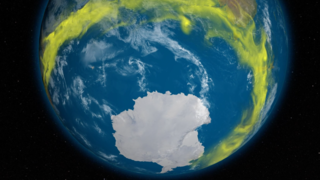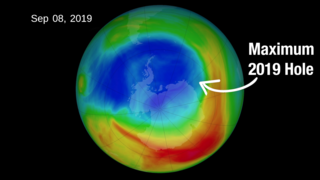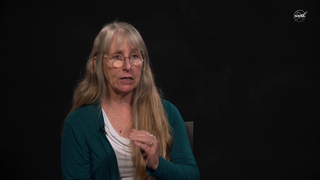Earth
ID: 12708
Thirty years ago, the nations of the world agreed to the landmark ‘Montreal Protocol on Substances that Deplete the Ozone Layer.’ The Protocol limited the release of ozone-depleting chlorofluorocarbons (CFCs) into the atmosphere.
Since the 1960s, NASA scientists have worked with NOAA researchers to study the ozone layer, using a combination of satellite, aircraft and balloon measurements of the atmosphere.
Things have been improving in the 30 years since the Montreal Protocol. Thanks to the agreement, the concentration of CFCs in the atmosphere has been decreasing, and the ozone hole maximum has been smaller since a record in 2006.
From the ground and space, NASA science offers a unique perspective of Earth, helping to identify challenges and find solutions to benefit the planet.
NASA Watches 30 Years of Ozone Success
Since the 1960s, NASA scientists have worked with NOAA researchers to study the ozone layer, using a combination of satellite, aircraft and balloon measurements of the atmosphere.
Things have been improving in the 30 years since the Montreal Protocol. Thanks to the agreement, the concentration of CFCs in the atmosphere has been decreasing, and the ozone hole maximum has been smaller since a record in 2006.
From the ground and space, NASA science offers a unique perspective of Earth, helping to identify challenges and find solutions to benefit the planet.
Used Elsewhere In
Related
Credits
Please give credit for this item to:
NASA's Goddard Space Flight Center
NASA's Goddard Space Flight Center
Short URL to share this page:
https://svs.gsfc.nasa.gov/12708
Keywords:
SVS >> Chlorofluorocarbons
SVS >> HDTV
SVS >> Ozone Hole
SVS >> Ozone depletion
GCMD >> Earth Science >> Atmosphere >> Atmospheric Chemistry/Oxygen Compounds >> Ozone
SVS >> Aura
NASA Science >> Earth
SVS >> Montreal Protocol
GCMD keywords can be found on the Internet with the following citation: Olsen, L.M., G. Major, K. Shein, J. Scialdone, S. Ritz, T. Stevens, M. Morahan, A. Aleman, R. Vogel, S. Leicester, H. Weir, M. Meaux, S. Grebas, C.Solomon, M. Holland, T. Northcutt, R. A. Restrepo, R. Bilodeau, 2013. NASA/Global Change Master Directory (GCMD) Earth Science Keywords. Version 8.0.0.0.0
https://svs.gsfc.nasa.gov/12708
Keywords:
SVS >> Chlorofluorocarbons
SVS >> HDTV
SVS >> Ozone Hole
SVS >> Ozone depletion
GCMD >> Earth Science >> Atmosphere >> Atmospheric Chemistry/Oxygen Compounds >> Ozone
SVS >> Aura
NASA Science >> Earth
SVS >> Montreal Protocol
GCMD keywords can be found on the Internet with the following citation: Olsen, L.M., G. Major, K. Shein, J. Scialdone, S. Ritz, T. Stevens, M. Morahan, A. Aleman, R. Vogel, S. Leicester, H. Weir, M. Meaux, S. Grebas, C.Solomon, M. Holland, T. Northcutt, R. A. Restrepo, R. Bilodeau, 2013. NASA/Global Change Master Directory (GCMD) Earth Science Keywords. Version 8.0.0.0.0














